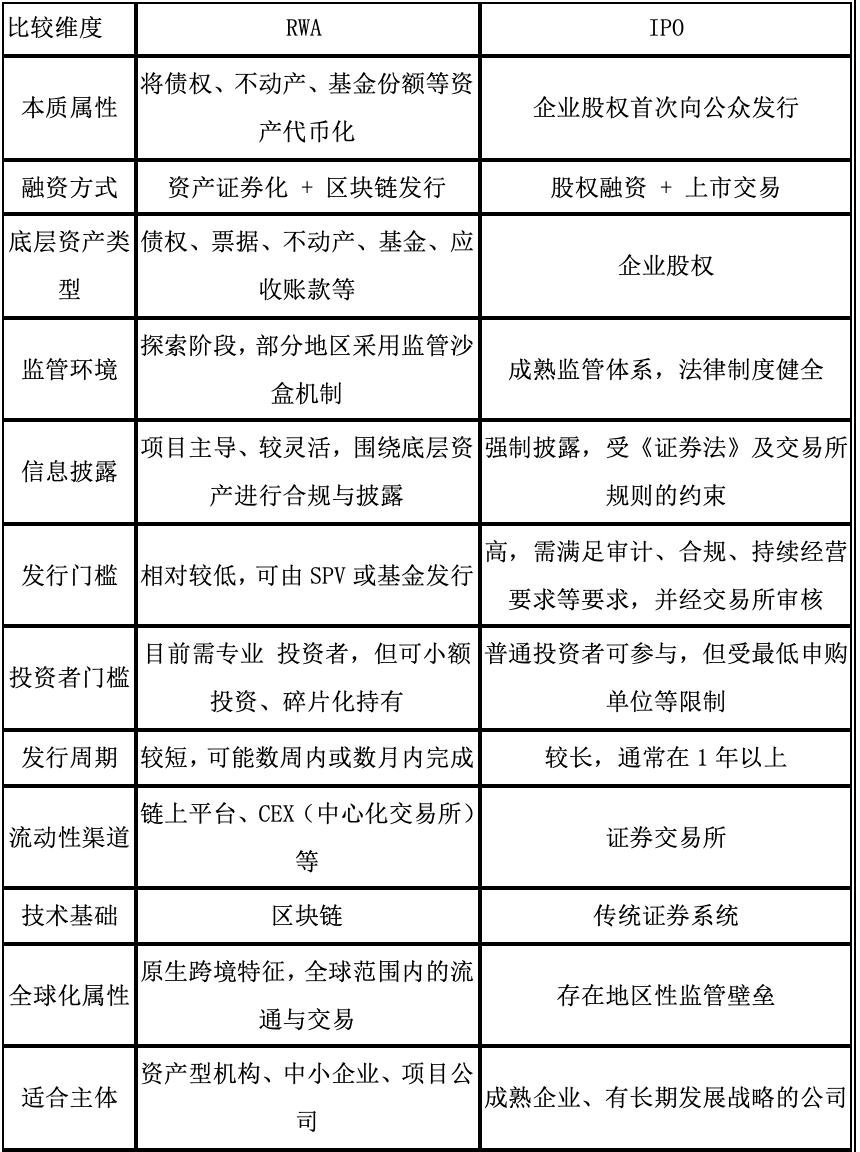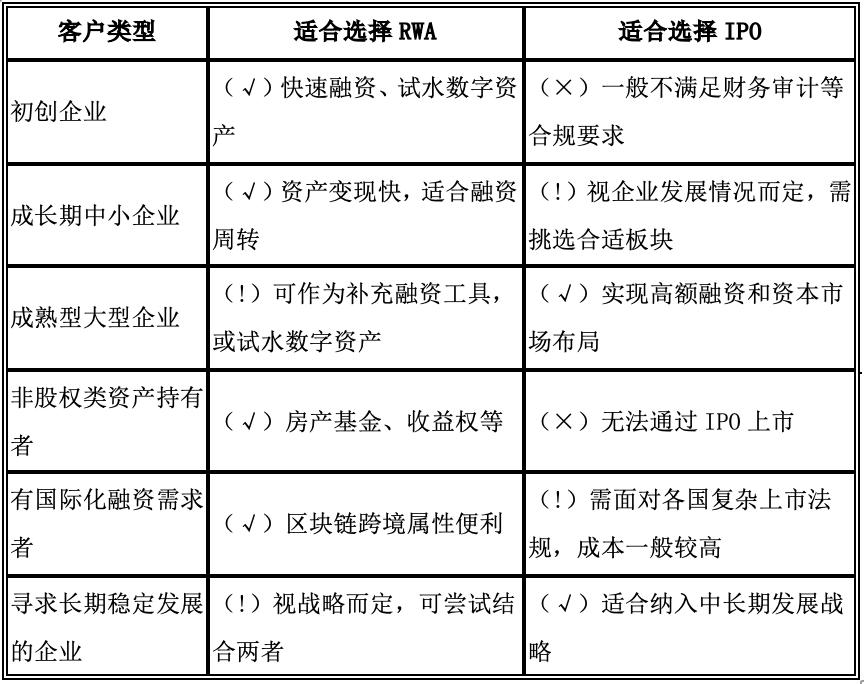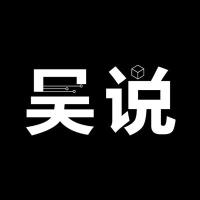Article by: Xiao Sa Legal Team
In recent years, with the development of blockchain technology and the continuous improvement of regulatory frameworks, the tokenization of RWA (Real World Assets) has gradually become the focus of financial markets, with responses and attempts made by regions such as Hong Kong, the United States, and Singapore. Meanwhile, traditional IPO (Initial Public Offering) remains an important financing method for enterprises. So, what are the similarities and differences between RWA and IPO? What are their respective advantages? How should enterprises choose? Today, the Xiao Sa team will discuss the relationship between the two, aiming to provide a reference for enterprises with different financing needs.
01 A Brief Overview of RWA and IPO
RWA, or the tokenization of real-world assets, refers to the conversion of traditional financial assets such as debt rights, real estate, accounts receivable, fund shares, and notes into digital assets that can circulate on the blockchain. This process not only enhances asset liquidity but also reduces transaction costs and increases transparency. For example, a fund company can package the revenue rights of its real estate project and issue them as virtual currency on the chain, allowing global investors to participate in trading with a lower threshold.
IPO, or Initial Public Offering, is the act of a company first issuing stocks to public investors and listing on a securities exchange. It is the most formal, longest-standing, and most compliant financing method in the capital market, requiring the participation of accounting firms, law firms, and securities firms. It involves strict financial audits, legal compliance reviews, and the preparation of prospectuses, marking the company's entry into the public market.
02 A Table Clarifying the Main Differences Between RWA and IPO


03 Advantages of IPO and RWA
RWA and IPO have some similarities, but due to different financing logics, they each have their own advantages.
RWA, as an emerging financing method using blockchain technology, has the following advantages: (1) Low threshold and high efficiency: RWA can be divided into investment amounts as needed, with participation possible from just a few hundred or even tens of dollars, suitable for a broader investor base. (2) Enhanced liquidity: Previously illiquid assets like accounts receivable or real estate revenue rights can now be traded globally on the chain. (3) High issuance efficiency: No dependence on traditional underwriting processes, with no need for long waiting periods, and quick issuance once the technology is mature. (4) On-chain transparency: All transaction records are traceable on the chain, enhancing the trust mechanism.
IPO, as a traditional financing method for companies entering the capital market, has the following advantages: (1) High financing amount: Once listed, companies can typically raise hundreds of millions or even billions. (2) Brand reputation enhancement: Listing means passing strict regulatory scrutiny, which has a significant positive impact on the company's brand image. (3) Large capital operation space: Through subsequent additional issuances, mergers and acquisitions, equity incentives, and other tools, utilizing the capital market to multi-dimensionally empower enterprise benefit growth. (4) Improved investor protection mechanism: A more regulated environment, mature systems, and legal protections for investor rights. (5) Broad investor base: Covering institutional and retail investors, with ample market liquidity.
04 Regulatory Differences Between IPO and RWA - Taking Hong Kong as an Example
As an international financial center where East meets West, Hong Kong has always sought balance between traditional and emerging finance. In the regulation of RWA and IPO financing methods, Hong Kong shows a clear "differentiated regulatory orientation": emphasizing rigor, compliance, information disclosure, and investor protection for IPOs; adopting a relatively open attitude towards RWA, encouraging innovation while gradually bringing it under regulation.
Hong Kong's IPO system has long followed the strict framework of the Securities and Futures Ordinance, with the listing process jointly supervised by the Hong Kong Stock Exchange and the Securities and Futures Commission (SFC), covering multiple stages such as sponsorship, due diligence, audit review, information disclosure, and public shareholding percentage, ensuring that listed companies have stable financial performance, sustainable operating capabilities, and good governance structures. This strict regulation not only protects investor interests but also enhances the credibility of the Hong Kong market.
In contrast, Hong Kong's regulation of RWA shows an "inclusive and cautious" experimental approach. In recent years, the SFC has frequently issued regulatory circulars on tokenized assets, gradually establishing regulatory sandboxes, virtual asset service provider licensing systems, and attempting to regulate RWA-type tokens as qualified investment products. For example, the circular issued in 2023 on SFC-recognized tokenized investment products for the first time clearly specified that product providers must be responsible for the reliability of tokenization arrangements and operations, ensure compatibility with service providers, and explain the reliability of arrangements as required by the SFC, obtaining third-party review, verification, and legal opinions when necessary, demonstrating Hong Kong's efforts to balance financial progress with investor protection.
05 A Table Clarifying the Suitable Customer Groups for IPO and RWA

06 In Conclusion: IPO and RWA - Complementary, Not Substitutive
We should recognize that RWA is not a replacement for IPO, but a supplement and reconstruction of the traditional financing system. It provides unprecedented financing channels for small and medium-sized enterprises and asset holders, enhancing financial inclusivity; while IPO remains a key path for enterprises to mature, embrace the public market, and global capital. For enterprises, they should reasonably choose or combine RWA and IPO based on their development stage, financing needs, asset structure, and strategic layout. In the future, as regulatory mechanisms mature, technical barriers lower, and market acceptance improves, RWA and IPO are expected to jointly build a more diverse, transparent, and efficient financing ecosystem.






